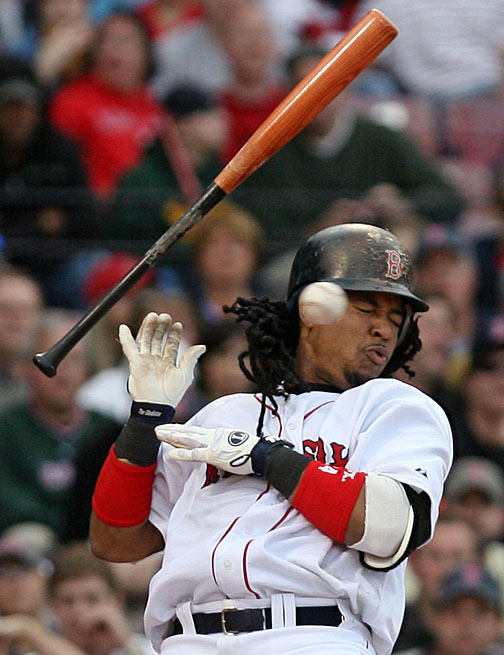Brushback baseball represents a unique blend of strategy, skill, and emotion within the sport. It embodies the intense psychological warfare that unfolds between pitchers and batters, where a single pitch can alter the course of a game. This technique is not just about throwing a ball; it’s about sending a message, asserting dominance, and defending one's territory on the mound.
In the world of baseball, the brushback pitch is often viewed through various lenses—some see it as a necessary tactic to protect pitchers, while others view it as a dangerous game of intimidation. The brushback pitch is designed to keep hitters aware and cautious, forcing them to rethink their approach at the plate. As fans, we are captivated by the tension and drama that these moments create, making every game a showcase of skill and mental fortitude.
Ultimately, brushback baseball serves as a reminder of the sport's deeper layers, where physical prowess meets psychological tactics. It’s a dance of strategy that has been perfected by some of the game’s greatest pitchers, embodying the spirit of competition and the unwritten rules that govern how the game is played. In this article, we will delve deeper into the world of brushback baseball, exploring its history, significance, and the players who have mastered this art form.
What is Brushback Baseball?
Brushback baseball involves a specific type of pitch that aims to intimidate the batter by throwing the ball close to them, often leading to a feeling of discomfort or fear. This technique is not merely an act of aggression; it serves multiple purposes:
- To establish the pitcher’s presence on the mound
- To send a message to the opposing team
- To disrupt the batter's timing and focus
- To protect teammates from being targeted by opposing pitchers
Why Do Pitchers Use Brushback Pitches?
Pitchers utilize brushback pitches for various strategic reasons. Here are some of the primary motivations:
- Establishing Dominance: A brushback pitch can signal to the batter that the pitcher is in control, effectively asserting dominance over the at-bat.
- Defensive Strategy: If a batter has been hitting well, a brushback pitch can disrupt their rhythm and make them think twice about their approach.
- Protecting Teammates: If an opposing player has been targeted or hit by a pitch, a pitcher may deliver a brushback to defend their teammates.
How Does Brushback Baseball Affect the Game?
Brushback baseball plays a pivotal role in shaping the dynamics of a game. Its impact can be felt in several ways:
- Creating Tension: The threat of a brushback pitch can create an electric atmosphere, heightening the stakes of each at-bat.
- Shifting Momentum: A well-timed brushback can shift the momentum of the game, energizing the pitcher and their team while rattling the batter.
- Influencing Strategy: Teams may adjust their batting strategies based on the likelihood of facing brushback pitches, adding another layer of complexity to the game.
Who are the Masters of Brushback Baseball?
Several pitchers throughout baseball history have become renowned for their mastery of the brushback pitch. Their ability to employ this tactic effectively has left a lasting impact on the game.
Biography of a Brushback Pitching Legend
One of the most iconic figures associated with brushback baseball is Bob Gibson. Known for his fierce competitiveness and intimidating presence on the mound, Gibson revolutionized the art of pitching. Below is a brief overview of his life and career:
| Personal Details | Bio Data |
|---|---|
| Name: | Bob Gibson |
| Date of Birth: | November 9, 1935 |
| Position: | Pitcher |
| MLB Career: | 1959–1975 |
| Teams: | St. Louis Cardinals |
| Notable Achievements: | 2× World Series Champion, 9× All-Star, 2× Cy Young Award Winner |
What Makes Bob Gibson a Brushback Pitching Icon?
Bob Gibson's legacy as a brushback pitcher is defined by his fierce approach and the psychological tactics he employed. Here’s what set him apart:
- Intimidation Factor: Gibson was known for his intense demeanor on the mound, using brushback pitches to instill fear in opposing batters.
- Strategic Precision: His ability to throw brushback pitches with precision made him one of the most dominant pitchers in baseball history.
- Fearlessness: Gibson's fearlessness in delivering brushback pitches earned him respect and admiration from fans and players alike.
How Has Brushback Baseball Evolved Over Time?
Brushback baseball has undergone significant changes since its inception. The evolution of this tactic can be attributed to various factors:
- Rule Changes: MLB has implemented stricter rules regarding player safety, influencing how pitchers approach the brushback pitch.
- Player Awareness: Batters today are more aware of the psychological tactics used by pitchers, leading to adaptations in their own approaches.
- Coaching Strategies: Modern coaching emphasizes mental preparation, teaching pitchers when and how to effectively utilize brushback pitches.
What are the Risks of Brushback Baseball?
While brushback pitches can be an effective tactic, they come with inherent risks:
- Injury Potential: A poorly executed brushback pitch can lead to serious injuries, prompting MLB to monitor such tactics closely.
- Retaliation: Delivering a brushback pitch can provoke retaliation from the opposing team, leading to escalating tensions on the field.
- Umpire Discretion: Umpires have the authority to issue warnings or eject players for excessive brushback tactics, influencing a pitcher's game strategy.
Can Brushback Baseball Be Used Strategically in Modern Games?
Despite the changing landscape of baseball, brushback pitches remain a part of the game, albeit used more selectively. Strategic use of brushback baseball can still provide pitchers with an edge, but it requires careful consideration and timing.
As the sport continues to evolve, the role of brushback baseball will undoubtedly adapt as well. Pitchers must balance the psychological advantages with the need to adhere to modern safety standards and the unwritten rules of the game.




